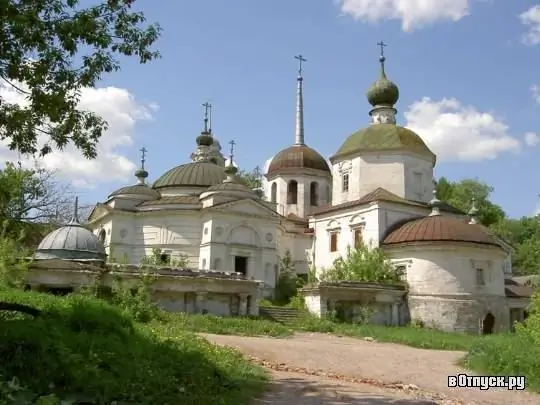
Description of the attraction
The complex of the Church of the Nativity of the Virgin is located not far from the river bank, on the site of the ancient old marketplace. No wonder the main throne was built on a hillside in 1750. the stone church is dedicated to Paraskeva Pyatnitsa - the patroness of trade. This is what this temple is most often called.
This is a type of temple "octagon on a quadruple", characteristic of the 18th century, single-domed, with a heavy semicircular apse adjoining it from the east. The corners of the quadrangle are fixed with shoulder blades, the windows are decorated with elegant baroque platbands with kokoshniks. From the west, the church is adjoined by a bell tower, completed with a high spire. The church is like a wreath surrounded by a ring of buildings of different times. Particularly interesting is the side-side temple (1825) in the form of a rotunda, made in the style of late classicism, decorated with pediments from the facades with a shallow loggia in the projection. Gentle domes are attached to the dome crowning the temple. Fragments of 19th century frescoes can be seen in the interior of the temple, but they are in very poor condition.
Of the other buildings of the complex, the chapel, the clergy's house, two elegant towers, completed with a dome with a spire, as well as a solemn colonnade - a gallery decorated with paired columns of the Tuscan order and uniting the buildings into one whole - have survived. Rotunda towers were used as benches. Local white stone is widely used in the decoration of buildings.
The buildings form an extremely picturesque group. The authors of the complex succeeded in uncommonly organically merging buildings of different times into a single whole, combining motifs of baroque and late classicism in their decor.






